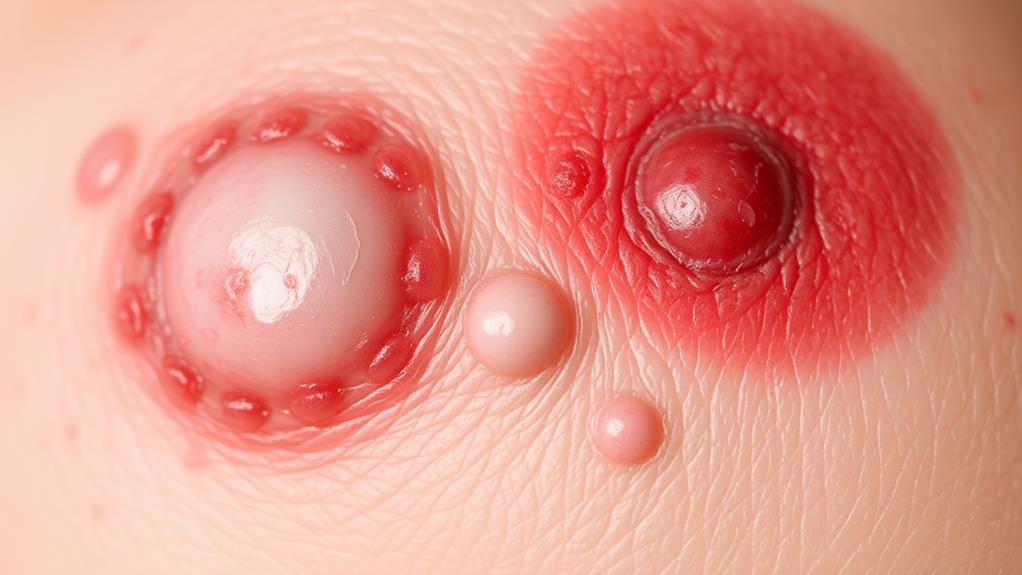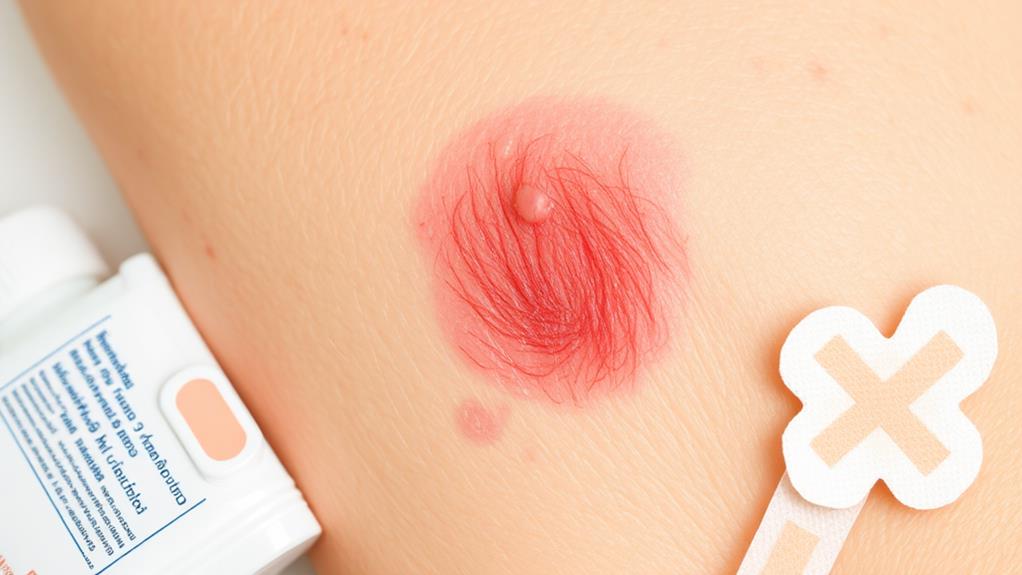If you've ever noticed red, swollen bumps on your skin or felt unusually fatigued, you might be encountering symptoms of a staph infection. It's essential to understand what these signs mean and how to respond effectively. Treatment options, including antibiotics and the possibility of drainage, can vary based on severity. But prevention is often the best approach. By implementing some straightforward practices, you can greatly reduce your risk. Curious about the specifics of symptoms, treatment methods, and preventive tips? Let's explore this important topic further.
Key Takeaways
- Symptoms of staph infection include red, swollen bumps, pain, pus-filled blisters, fever, and fatigue.
- Antibiotics are the primary treatment, with drainage of abscesses needed in some cases.
- Risk factors include close contact with infected individuals and compromised immune systems.
- Prevent infection by practicing regular handwashing, keeping wounds clean, and avoiding sharing personal items.
- Seek medical attention for persistent symptoms, signs of systemic infection, or severe pain.
Symptoms of Staph Infection

When you have a staph infection, you might notice a range of symptoms that can vary in severity.
Common signs include red, swollen bumps on your skin, which can feel warm or tender. You might also experience pain or pus-filled blisters that can be quite uncomfortable.
Sometimes, you could feel feverish or tired, suggesting your body is fighting something off. If the infection spreads, you may notice more serious symptoms like chills or dizziness.
It's important to listen to your body and seek medical help if you notice these signs.





